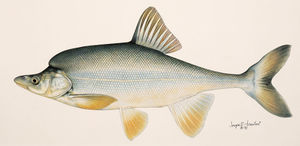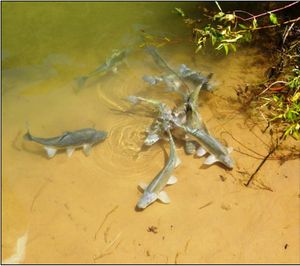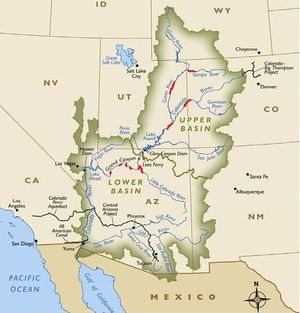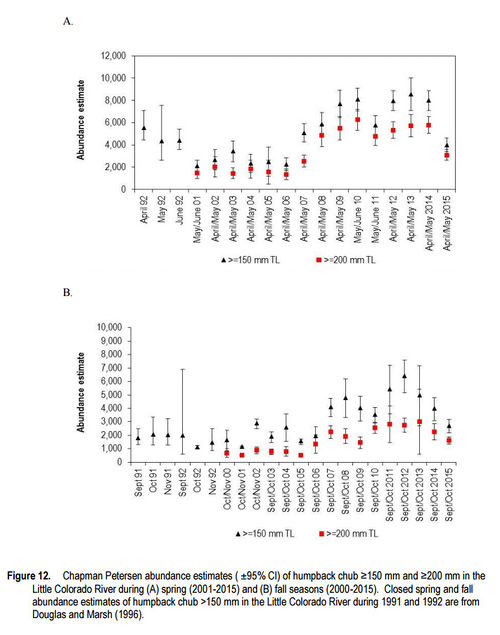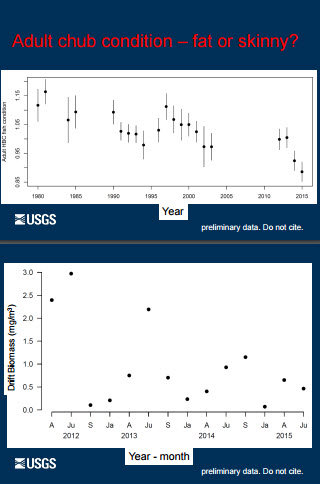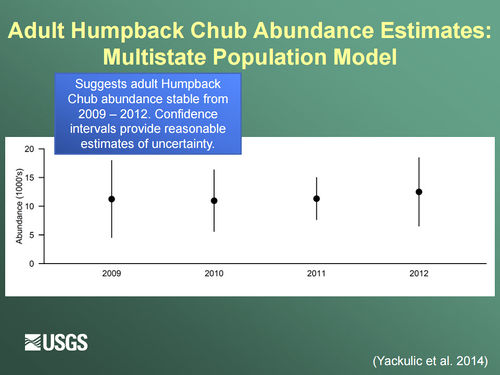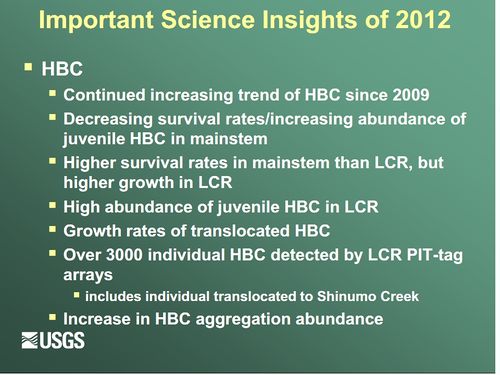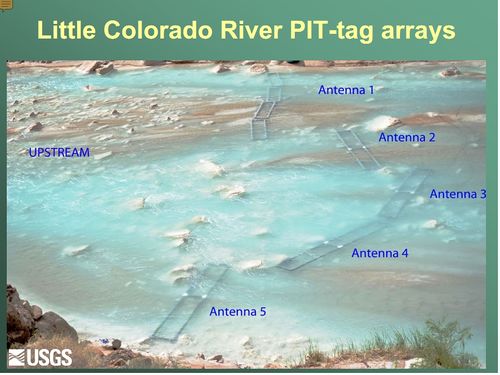Humpback Chub Page
|
Description The humpback chub is a relatively small fish by most standards – its maximum size is about 20 inches and 2.5 pounds. By minnow standards it is a big fish, though not like the giant of all minnows – the Colorado pikeminnow. Humpback chub can survive more than 30 years in the wild. It can spawn as young as 2 to 3 years of age during its March through July spawning season. Although the humpback chub does not have the swimming speed or strength of the Colorado pikeminnow, its body is uniquely formed to help it survive in its whitewater habitat. The hump that gives this fish its name acts as a stabilizer and a hydrodynamic foil that helps it maintain position. The humpback chub uses its large fins to “glide” through slow-moving areas, feeding on insects that become trapped in water pockets.
Today, five self-sustaining populations of humpback chub occur in the Upper Colorado River Basin. Two to three thousand adults can occur in the Black Rocks and Westwater Canyon core population in the Colorado River near the Colorado/Utah border. Several hundred to more than 1,000 adults may occur in the Desolation/Gray Canyon core population in the Green River. Populations in Yampa and Cataract canyons are small, each consisting of up to a few hundred adults. The largest known population of humpback chub is in the Lower Colorado River (LCR) Basin in the Grand Canyon -- primarily in the LCR and its confluence with the main stem of the Little Colorado River. In 2009, the U.S. Geological Survey announced that this population increased by about 50 percent from 2001 to 2008. The agency estimates that the number of adults is between 6,000 and 10,000, with the most likely number being 7,650 individuals. |
| --- | Fish Species of the Colorado River in Lower Glen Canyon and Grand Canyon | --- |
|---|
